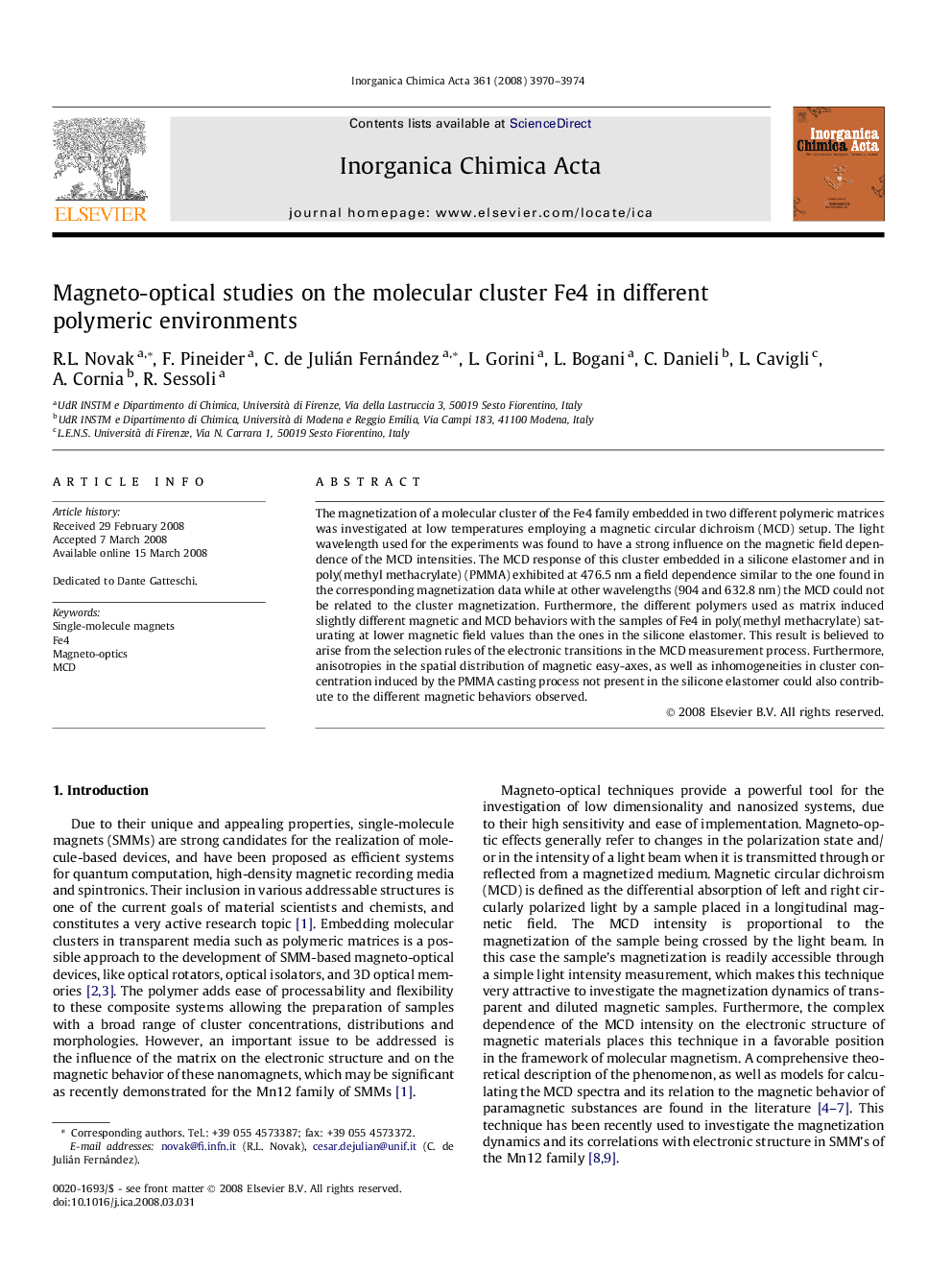| Article ID | Journal | Published Year | Pages | File Type |
|---|---|---|---|---|
| 1311471 | Inorganica Chimica Acta | 2008 | 5 Pages |
The magnetization of a molecular cluster of the Fe4 family embedded in two different polymeric matrices was investigated at low temperatures employing a magnetic circular dichroism (MCD) setup. The light wavelength used for the experiments was found to have a strong influence on the magnetic field dependence of the MCD intensities. The MCD response of this cluster embedded in a silicone elastomer and in poly(methyl methacrylate) (PMMA) exhibited at 476.5 nm a field dependence similar to the one found in the corresponding magnetization data while at other wavelengths (904 and 632.8 nm) the MCD could not be related to the cluster magnetization. Furthermore, the different polymers used as matrix induced slightly different magnetic and MCD behaviors with the samples of Fe4 in poly(methyl methacrylate) saturating at lower magnetic field values than the ones in the silicone elastomer. This result is believed to arise from the selection rules of the electronic transitions in the MCD measurement process. Furthermore, anisotropies in the spatial distribution of magnetic easy-axes, as well as inhomogeneities in cluster concentration induced by the PMMA casting process not present in the silicone elastomer could also contribute to the different magnetic behaviors observed.
Graphical abstractMagnetic circular dichroism was employed to investigate the magnetic behavior of a single-molecule magnet of the Fe4 family embedded in two different polymeric matrices. The influence of the host polymer in the magnetic response was discussed, and it was show that the choice of polymer, as well as its preparation process may greatly influence the magnetic behavior of the guest magnet.Figure optionsDownload full-size imageDownload as PowerPoint slide
